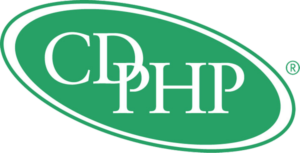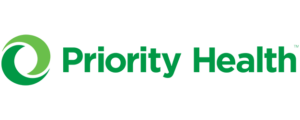Overview
When health plans are aligned with their provider partners to keep patients healthy and out of the hospital, costs go down, outcomes improve and consumers maintain their coverage.
Alliance of Community Health Plans (ACHP) member companies have long leveraged their close ties to the community, to caregivers and to the chronically ill to tailor care that results in healthier patients, fewer hospital visits and significantly lower health care spending.
This personalized approach is the foundation of efforts to tackle the interconnected challenges of unfilled prescriptions and medications not taken as directed. In the U.S., one out of every five prescriptions goes unfilled. Among those who do fill their prescriptions, only about half take them as directed by their prescriber.1 The cost is twofold. First, otherwise manageable chronic illnesses become more severe, resulting in sicker patients and more hospitalizations. And secondly, as a result, roughly $300 billion gets added to the nation’s overall health care bill each year.2
New analysis for ACHP by Wakely Consulting Group, LLC, finds that medication adherence programs focused on diabetes, hypertension and high-cholesterol medications save tens of millions of dollars each year by keeping patients healthier and out of the hospital. People who stay with their health plans for a year or more also tend to be healthier, resulting in lower overall spending by the individual, employer and taxpayer.
ACHP’s third annual Report on Affordability in Health Care highlights the benefits to consumers, employers and taxpayers when individuals adhere to prescribed medications and remain with their health plan year after year. These benefits are a testament to the value and impact of coordinated care and coverage that is unique in the ACHP model of payer-provider alignment.
ACHP's 10-year Health Care 2030: Roadmap to Reform
MEDICATION MANAGEMENT:
ADHERENCE PROGRAMS DRIVE DOWN EMERGENCY ROOM UTILIZATION, RESULT IN FEWER HOSPITALIZATIONS AND INCREASED SAVINGS
Even small improvements to medication adherence can lower health care spending. ACHP member companies save $1,040 a year on health care costs for each diabetic consumer who follows their medication regimen.6 Likewise, ACHP member companies’ consumers who stick with their hypertension and cholesterol medications reduce health care spending about $3,025 and $2,000, respectively a year.7
less likely to end up in the ER and
less likely to be admitted to the hospital.3
less likely to end up in the ER and
less likely to be admitted to the hospital.4
Patients with high cholesterol who follow their medication protocols correctly are
less likely to end up in the ER and
less likely to be admitted to the hospital.5
Case Studies
 12 percent increase in adherence to prescribed medication regimens amongst participants in the coaching program.
12 percent increase in adherence to prescribed medication regimens amongst participants in the coaching program.


More than
of members being treated for a combination of all three conditions are following their prescribed regimens.
READMISSION RATES DECREASE WHEN PATIENTS TAKE THEIR MEDICATION
Preventable readmissions have been a longstanding and unnecessary challenge. But successful interventions exist. When consumers closely follow their hypertension and cholesterol medication regimens, hospital readmissions are reduced by 23 percent and 20 percent, respectively.8
While this report focuses on patients treated for diabetes, hypertension or cholesterol, across-the-board readmission rates are typically lower when people have access to information about their medications and are equipped with tools to help them stick with their regimens.  At Albany, NY-based Capital District Physicians’ Health Plan, for example, a nurse or care manager meets members at their bedside as part of the Hospital to Home program to discuss discharge plans and follow-up appointments as well as secure transportation, medication delivery and adherence plans. The program has resulted in a 14 percent lower hospital readmission rate for patients who participate compared to patients who do not.
At Albany, NY-based Capital District Physicians’ Health Plan, for example, a nurse or care manager meets members at their bedside as part of the Hospital to Home program to discuss discharge plans and follow-up appointments as well as secure transportation, medication delivery and adherence plans. The program has resulted in a 14 percent lower hospital readmission rate for patients who participate compared to patients who do not.
ACHP member companies are rooted in the communities they serve – many for decades. This commitment is recognized by consumers who stay with their community health plan year after year. The evidence shows that continuing coverage with the same health plan year over year has measurable advantages. Health plans spend 26 percent less treating Medicare beneficiaries with diabetes, hypertension or high cholesterol if those seniors stay with their plans for more than one year.9 Chronic disease management takes time, so the longer a patient is with a health plan, the more time the provider partners have to get to know the patient, understand their motivations and hesitations and address care delivery concerns.

Priority Health’s PriorityMOM Program was initially implemented to solve the challenge of post-delivery readmissions related to hypertension. Participating mothers receive emails at specific times throughout their pregnancy with targeted messages to keep them on track with ideal care. Expectant mothers, for instance, are provided at-home blood pressure cuffs and are trained in how to use them. Since launching, over 640 moms have enrolled, and nearly 90 percent would recommend the program.
FOR SENIORS:
SEEING STARS—AND IMPROVED HEALTH
Now covering a majority of eligible beneficiaries, Medicare Advantage (MA) is the only government health care program that measures and rewards high-quality, efficient, coordinated coverage and care. Community health plans are uniquely positioned to offer this level of care to consumers. In addition to leading on overall scores in the CMS Star Rating system, ACHP member companies excelled in key metrics in the 2024 MA Stars—both in clinical measures and consumer experience. On average, ACHP member plans outscored non-ACHP plans on 35 out of 42 measures, including preventive health care measures, member experience, drug safety and pricing accuracy.10 When it comes to consumers taking their prescribed medications to treat diabetes, hypertension or cholesterol, ACHP members significantly outperformed the rest of the industry.11
| Medication Adherence Measure | ACHP Average Rating | Non-ACHP Average Rating | Difference |
|---|---|---|---|
| Medication Adherence: Diabetes | 3.70 | 3.15 | 0.55 |
| Medication Adherence: Hypertension | 4.19 | 3.25 | 0.95 |
| Medication Adherence: Cholesterol | 3.91 | 3.14 | 0.77 |
ACHP members outperform the industry by
on members who take their diabetes medications.
ACHP members outperform the industry by
on members who take their hypertension medications.
ACHP members outperform the industry by
on members who take their cholesterol medications.
Conclusion
The connection between successful health care strategies and affordability is clear: patients properly following medication regimens are healthier, leading to fewer dollars spent throughout the health care system. Medication adherence for diabetes and hypertension is especially valuable, reducing risks of expensive complications such as amputations, kidney failure and heart disease. Considering that a quarter of all health expenses in the U.S. go toward treating complications from diabetes, any successful strategy could result in billions of dollars saved.
Provider-aligned health plans manage care and keep people out of the hospital in part by forging close ties to their communities, clinicians and consumers. ACHP member companies, in particular, are industry leaders in member retention, leading to even greater patient health outcomes and reduced costs.
While there’s no guarantee a patient will always follow medication protocols, individuals covered by ACHP’s nonprofit regional plans have higher success rates, creating a virtuous cycle of better health outcomes and lower costs. Investing in medication adherence is delivering value for the premium dollar, and that’s good news for everyone.
ACHP Members
1 Source: Neiman, A.B., Ruppar, T., Ho, M., et al. (Nov. 17, 2017). “CDC Grand Rounds: Improving Medication Adherence for Chronic Disease Management—Innovations and Opportunities.” MMWR Morb Mortal Wkly Rep. https://www.cdc.gov/mmwr/volumes/66/wr/mm6645a2.htm#:~:text=In%20the%20United%20States%2C%203.8,%2C%20and%20duration%20(4).
2 IBID
3 Source: ACHP commissioned analysis by Wakely Consulting Group, LLC, an HMA Company (Wakely) to analyze the relationships between various quality measures and certain utilization and cost metrics (September 2023).
4 IBID
5 IBID
6 IBID
7 IBID
8 IBID
9 IBID
10 IBID
11 IBID

























